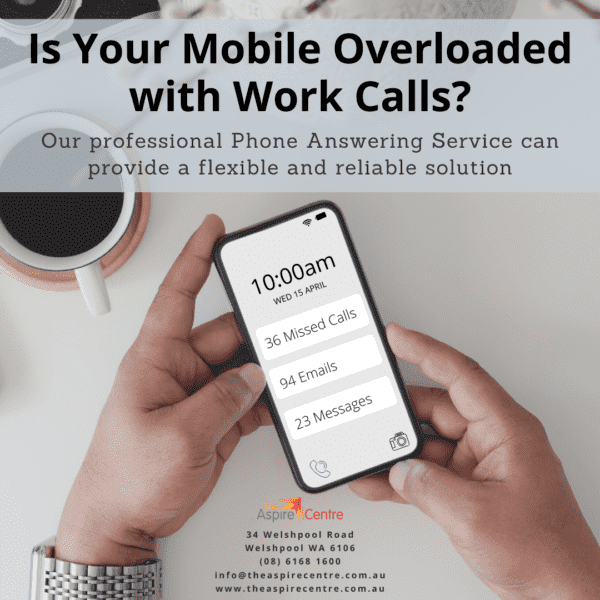All Categories
Featured
Table of Contents
- – What Is The Best Telephone Answering Service Me...
- – What The Best Telephone Answering Service Melb...
- – Best Telephone Answering Service Sydney - Virt...
- – Who Is The Best Automated Answering Services ...
- – What Is The Best Phone Call Answering Service...
- – What Is The Best 10 Signs Your Business Need...
What Is The Best Telephone Answering Service Melbourne Cbd Australia Today
This gadget and its followers were developed by Sava Jacobson, an electrical engineer with a private consulting organization. While early voice mail utilized magnetic tape technology, the majority of modern-day equipment uses strong state memory storage; some devices use a combination of both, with a solid-state circuit for the outgoing message and a cassette for the inbound messages.
"toll saving" listed below) (professional phone answering service). This is beneficial if the owner is evaluating calls and does not wish to consult with all callers. In any case after going, the calling celebration needs to be notified about the call having been addressed (in a lot of cases this starts the charging), either by some remark of the operator, or by some greeting message of the little, or resolved to non-human callers (e.
This holds especially for the Littles with digitally kept welcoming messages or for earlier devices (before the increase of microcassettes) with an unique unlimited loop tape, separate from a second cassette, devoted to recording. There have actually been answer-only gadgets without any recording capabilities, where the greeting message needed to notify callers of a state of existing unattainability, or e (virtual call answering service).
What The Best Telephone Answering Service Melbourne Cbd Australia Brand To Buy

about accessibility hours. In tape-recording TADs the greeting normally consists of an invitation to leave a message "after the beep". An answering machine that uses a microcassette to tape messages On a dual-cassette answerphone, there is an outbound cassette, which after the specified number of rings plays a pre-recorded message to the caller.

Single-cassette answering makers consist of the outbound message at the start of the tape and inbound messages on the staying space. They initially play the announcement, then fast-forward to the next available area for recording, then tape-record the caller's message. If there are numerous previous messages, fast-forwarding through them can cause a considerable hold-up.
This beep is typically referred to in the welcoming message, asking for that the caller leave a message "after the beep". TADs with digital storage for the tape-recorded messages do disappoint this delay, of course. A TAD might provide a remote control center, where the answerphone owner can ring the house number and, by entering a code on the remote telephone's keypad, can listen to tape-recorded messages, or erase them, even when far from home.
Best Telephone Answering Service Sydney - Virtual Office Sydney Deals Near Me

Thereby the maker increases the variety of rings after which it addresses the call (usually by two, resulting in four rings), if no unread messages are currently saved, however answers after the set number of rings (usually two) if there are unread messages. This enables the owner to learn whether there are messages waiting; if there are none, the owner can hang up the phone on the, e.
Some machines also enable themselves to be from another location activated, if they have been changed off, by calling and letting the phone ring a particular large number of times (normally 10-15). Some service providers desert calls already after a smaller number of rings, making remote activation difficult. In the early days of TADs an unique transmitter for DTMF tones (dual-tone multi-frequency signalling) was regionally required for push-button control, since the previously utilized pulse dialling is not apt to communicate suitable signalling along an active connection, and the dual-tone multi-frequency signalling was implemented stepwise.
Any incoming call is not identifiable with regard to these homes in advance of going "off hook" by the terminal devices. So after going off hook the calls should be switched to appropriate gadgets and only the voice-type is instantly accessible to a human, however perhaps, nonetheless must be routed to a TAD (e.
Who Is The Best Automated Answering Services - How Do They Work? Manufacturer
What if I told you that you do not need to really choose up your device when responding to a customer call? Another person will. So hassle-free, right? Answering telephone call does not need someone to be on the other end of the line. Efficient automated phone systems can do the technique simply as effectively as a live agent and in some cases even much better.
An automated answering service or interactive voice action system is a phone system that interacts with callers without a live person on the line - virtual telephone answering service. When companies utilize this innovation, customers can get the response to a question about your business merely by utilizing interactions set up on a pre-programmed call flow.
Although live operators upgrade the client service experience, lots of calls do not require human interaction. A simple recorded message or guidelines on how a customer can obtain a piece of information generally solves a caller's immediate need - reception services. Automated answering services are a basic and reliable method to direct inbound calls to the ideal person.
What Is The Best Phone Call Answering Service Company?
Notification that when you call a company, either for support or product inquiry, the very first thing you will hear is a pre-recorded voice greeting and a series of options like press 1 for customer support, press 2 for queries, and so on. The pre-recorded choices branch out to other options depending on the customer's selection.
The phone tree system assists direct callers to the ideal person or department using the keypad on a smart phone. In some instances, callers can use their voices. It's worth keeping in mind that auto-attendant choices aren't limited to the 10 numbers on a phone's keypad. Once the caller has chosen their very first alternative, you can create a multi-level auto-attendant that uses sub-menus to direct the caller to the best kind of help.
The caller does not have to interact with an individual if the auto-attendant phone system can handle their concern. The automated service can path callers to a staff member if they reach a "dead end" and need support from a live representative. It is pricey to employ an operator or executive assistant.
What Is The Best 10 Signs Your Business Needs A Telephone Answering Service Brand
Automated answering services, on the other hand, are substantially cheaper and offer significant cost savings at an average of $200-$420/month. Even if you don't have actually devoted staff to manage call routing and management, an automatic answering service improves efficiency by permitting your group to focus on their strengths so they can more effectively invest their time on the phone.
A sales lead routed to customer support is a lost shot. If a consumer who has product concerns reaches the wrong department or receives incomplete answers from well-meaning employees who are less trained to deal with a particular type of question, it can be a reason for disappointment and discontentment. An automatic answering system can decrease the number of misrouted calls, thus assisting your staff members make better usage of their phone time while maximizing time in their calendar for other tasks.
With Automated Answering Systems, you can develop a tailored experience for both your personnel and your callers. Make a recording of your main greeting, and merely update it regularly to show what is going on in your company. You can create as numerous departments or menu choices as you want.
Table of Contents
- – What Is The Best Telephone Answering Service Me...
- – What The Best Telephone Answering Service Melb...
- – Best Telephone Answering Service Sydney - Virt...
- – Who Is The Best Automated Answering Services ...
- – What Is The Best Phone Call Answering Service...
- – What Is The Best 10 Signs Your Business Need...
Latest Posts
24/7 Answering Service Near Me
Fast After Hours Answering Near Me
Thorough Professional Answering Service Near Me ( WA)
More
Latest Posts
24/7 Answering Service Near Me
Fast After Hours Answering Near Me
Thorough Professional Answering Service Near Me ( WA)